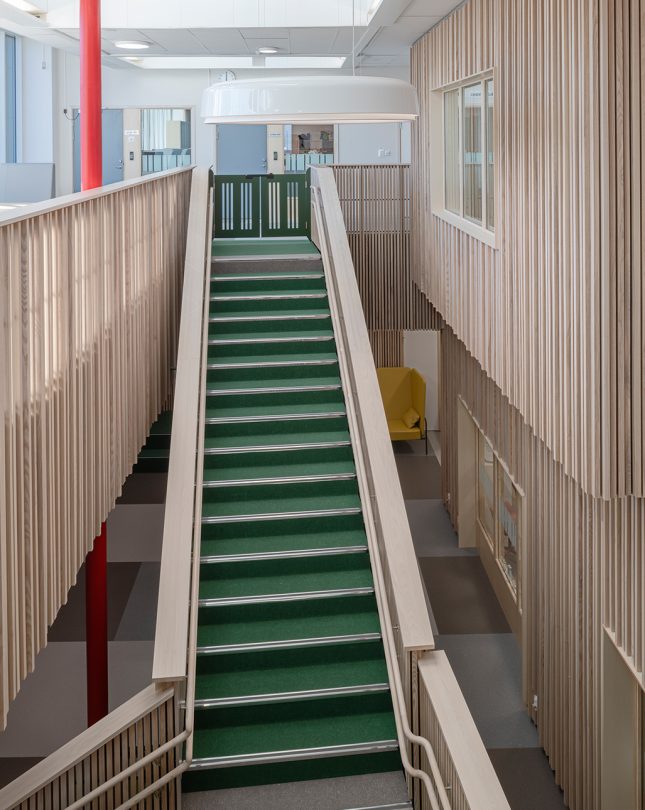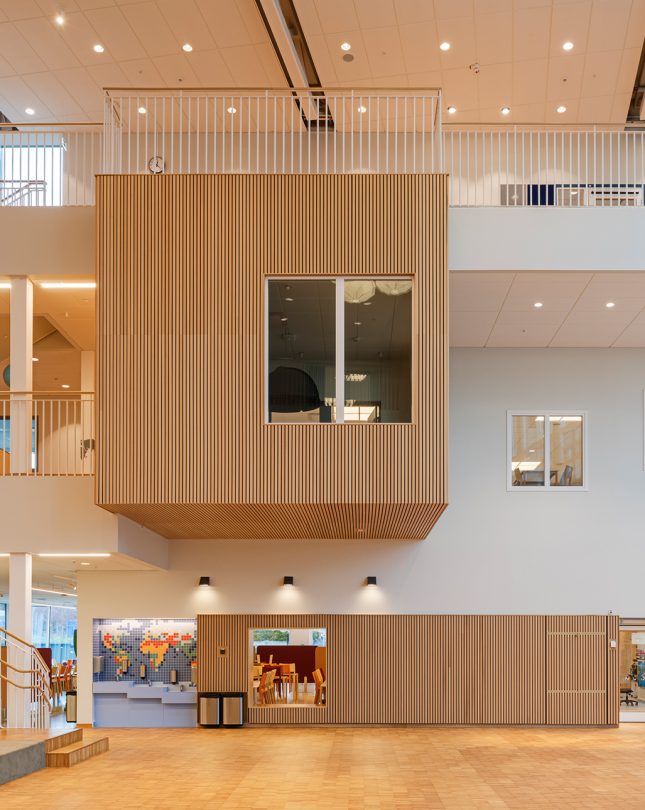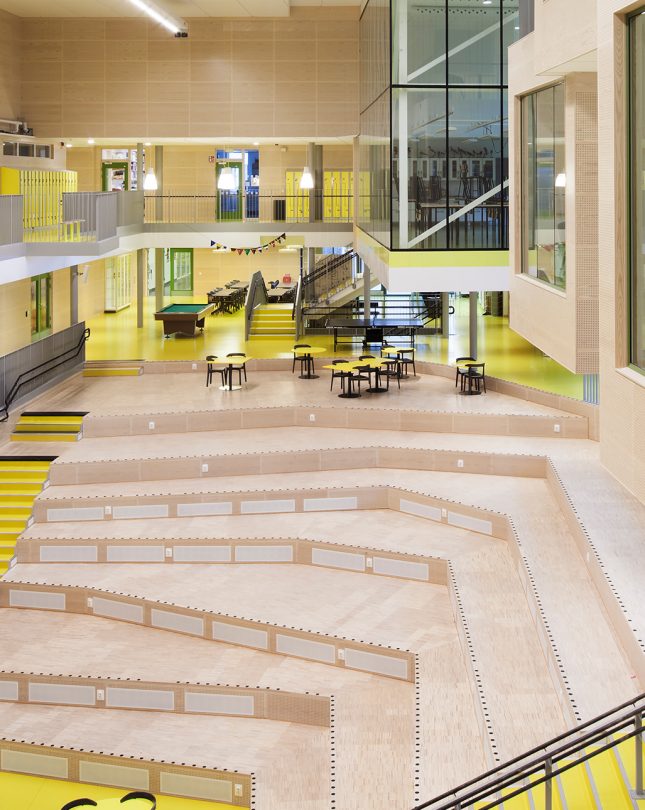Our latest news and views English
Underpinned by our Scandinavian design heritage, we bring you regular stories about architecture and interiors, exploring natural materials, acoustics, and the creation of safe and harmonious environments.
Schools have featured a lot in the pandemic news, as children’s education and social interaction have been disrupted by Covid-19. Suddenly, the existing discussions in architecture on sustainability and natural materials have blended with concerns over the health and wellbeing of children.
In Sweden, it is just over five years since a research study was published, outlining the need to build a further 1,000 schools in just 10 years. Since then, a number of architects, developers and contractors have lobbied and worked with local authorities to meet the demand for both new and refurbished schools, bringing ideas, competence and knowledge. We are now halfway through those 10 years, so it seems fitting, especially in the light of Covid’s lessons, to take a look at recent education facilities by Swedish architects, and summarise three common threads and trends.

Something instinctively felt by architects such as Le Corbusier and Alvar Aalto in the twentieth century, but now supported by research studies that have shown a clear acceleration in learning when children are in the presence of ample natural light.
One example in Sweden is the Stigtomta school in Nyköping by Carlstedt Arkitekter, which is like a poem to the beauty of natural daylight. The atmosphere is one of cool, calm order, thanks to the many skylights combined with clever storage solutions and natural materials. The vertical pattern of the solid timber panels in ash plays throughout the interior, bringing a sense of rhythm and transparency, as light floods the space.
An interdisciplinary study at Bremen University is one of many to have shown the connection between good acoustics and wellbeing in all environments. This includes schools, where the stress reaction of both teachers’ and children’s hearts has been traced directly to sound levels.
In another Swedish study, voice problems were linked to teachers’ lack of wellbeing. Finding a direct correlation between poor acoustics and vocal problems, such studies have shown that by improving classroom acoustics, the teachers’ voices are put under much less strain, blood pressure is lowered and children respond more positively to learning.
One new school in Sweden with acoustics at the top of its agenda is Hägerneholms School by Arcona Arkitekter. Designing a safe environment “where children have peace and desire to learn”, the architects dispensed with “ordinary corridors” and corners and made acoustics the priority, to give all students the chance to concentrate.
Attention was given to wellbeing in every detail: from the oak veneer acoustic panels, to the colour and appearance of the lamp buttons, and systems that adapt heat and ventilation to the students’ presence. The acoustic choreography becomes part of a total multi-sensory experience.


A material at the heart of Swedish culture and of the sustainability and wellbeing debate worldwide, wood features prominently in new Swedish school designs. The material brings a tactile beauty, lightness, and warmth, and it has been scientifically shown to promote calm, stimulate work, and facilitate communication and team-work in the educational environment.
Perhaps the most familiar of natural building materials, its use in schools makes absolute sense, coupled with its organic empathy that enhances the experiences of both teachers and children.
In the projects featured above, this certainly seems to be the case; and in renovation projects too, wood has played a new role. One example is Näsbypark School in Täby where Gustafs panels in white pigmented ash now clad the atrium, creating a dynamic space for meetings and gatherings.
Looking at these trends, one thing is clear: that when advanced technology driven by scientific research combines with natural materials and daylight, the health and wellbeing of both children and teachers are improved.